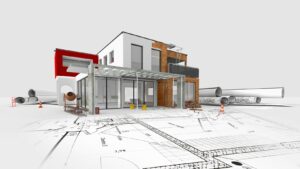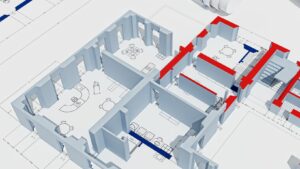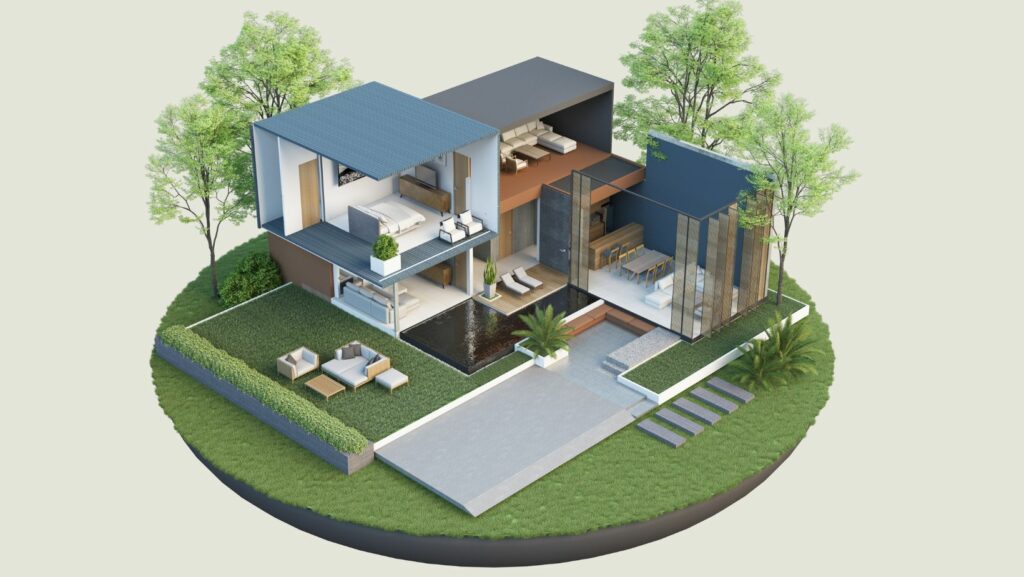Dreaming of designing your own home but don’t know where to start? The world of architectural design can seem daunting, but it’s not out of reach for beginners. With the right tools, you can bring your vision to life without breaking the bank.
So whether you’re a budding architect, an enthusiastic homeowner, or just someone with a passion for design, this article will guide you through the best free architectural design software for beginners. Stay tuned as we dive into the world of digital design.
Free Architectural Design Software for Beginners

Diving into the digital design realm requires guidance about the best free architectural design software for beginners. SketchUp Free, with its easy-to-use interface, makes starting off an effortless task. It offers 3D modeling, an essential in today’s design complex. Another notable mention is Tinkercad, explicitly crafted to engage beginners due to its simplicity and user-friendly operations. Meanwhile, Fusion 360 caters to those eyeing a deeper dive into the design process, bridging the gap between beginner and intermediate expertise. Lastly, Rhino’s evaluation version, though not fully free, grants a comprehensive snapshot of professional-grade software, designed to familiarize beginners with advanced operations. These tools unlock the doors to architectural design, each paving its unique path for beginners to explore.
Understanding Architectural Design Software

Architectural design software stands as a pivotal tool for architectural design, presenting vast capabilities beyond traditional manual drafting. The software assists in two-dimensional (2D) drafting, meaning creation of floor plans and elevations, for example. Coupled with three-dimensional (3D) modelling features – a concrete instance being SketchUp Free’s 3D modeling capability – these tools offer an immersive, comprehensive design experience. Notably, they streamline design processes, enhancing precision and accuracy while significantly reducing the time spent.
Simplicity and user-friendliness form an integral part of this software, as shown in platforms such as Tinkercad. Flexibility is also a key attribute, certain software like Fusion 360, stands as a convenient bridge between beginner and intermediate expertise levels. Meanwhile, a glance at the Rhino evaluation version provides insight into professional-grade software’s potential.
How to Get Started with Free Architectural Design Software

Embarking on the journey into the world of architectural design demands hands-on experience with the right software. Start by choosing the proper tool in line with the individual’s proficiency level. SketchUp Free, for instance, suits absolute beginners, with its easy-to-use interface enabling the creation of 2D drafts and 3D models. Learning involves mastering basic drawing techniques, layering, and building heights and measurements.
The next step involves branching out to software like Tinkercad, aiding beginners in crafting precise 3D designs. This software offers straightforward tutorials, making it easy to grasp the rudiments of architectural design. If the user hungers for more advanced knowledge, it’s preferable to delve into Fusion 360, extending towards intermediate levels. Lastly, a sneak peek into professional-grade layouts waits with Rhino’s evaluation version. It offers beginners the golden opportunity to unravel complexities, albeit in a limited capacity.
Remember, success with free architectural design software, lies not only in selecting the right tool but also in exploring its every possibility, investing time in learning and thus glossing skills. Time spent in honing one’s capabilities through software learning sooner translates into the creation of compelling designs.
Benefits of Using Architectural Design Software
Embarking on an architectural design journey doesn’t have to be daunting or expensive. Free software tools, such as SketchUp Free, Tinkercad, Fusion 360, and Rhino’s evaluation version, offer beginners a stepping stone into the world of architectural design. These tools cater to varying proficiency levels, allowing users to progress from creating basic 2D drafts and 3D models to developing precise designs and exploring professional-grade layouts. The key to success lies in selecting the right tool, fully exploring its capabilities, and continually learning and refining skills. With these resources, it’s possible for beginners to create compelling architectural designs without breaking the bank.

